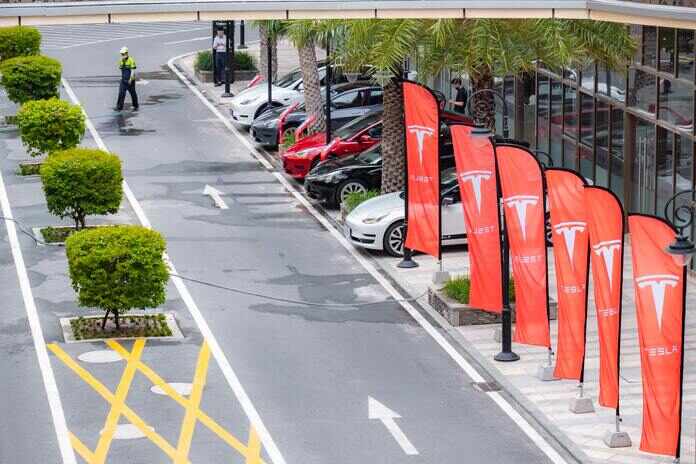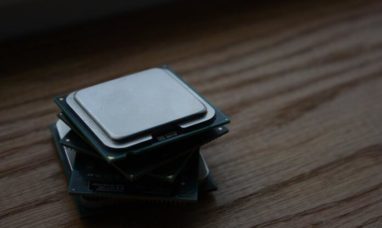Tesla Inc (NASDAQ:TSLA)
Despite being one of the first foreign car manufacturers to establish a foothold in the Chinese market, Tesla, known for its innovative electric cars, has been experiencing a slump in sales there. This is the case even though Tesla was one of the first foreign car manufacturers to establish a foothold in the Chinese market. The company’s efforts to reclaim its market share by beginning a pricing war have been unsuccessful, and rival BYD has emerged as the leading player in the Chinese electric car market as a result of this.
In 2023, it is anticipated that Chinese automakers will sell more passenger vehicles than their Western competitors for the first time.
In 2019, Tesla lowered the pricing of its Model S, Model X, and Model 3 automobiles by 10–26% in order to make these models more accessible to consumers in China. The move was made with the intention of luring customers away from purchasing more affordable electric vehicles, such as the Tang and Qin models produced by BYD. On the other hand, the price reduction was not successful in having a substantial influence on sales, as BYD’s sales increased by a factor of 130 in 2019.
Elon Musk’s company is losing market share to BYD, which is backed by Warren Buffett. This puts Chinese carmakers on track to sell more passenger vehicles than their foreign competitors for the first time in 2023. Tesla’s move to slash prices in China has backfired as the company loses market share to BYD.
Tesla’s brand image in China, which is linked with luxury and high-end items, has also been a factor contributing to its decrease in the Chinese market. This is one of the factors that contributed to Tesla’s loss in the Chinese market. Many Chinese customers see Tesla not as a functional car but rather as a symbol of social prestige, and the business has had a hard time appealing to middle-class customers who place a higher value on cost-effectiveness than they do on opulence. In contrast, BYD’s brand image is more focused on being useful and accessible to a wider audience, which has been a significant contributor to the company’s success in China.
In order to recoup lost ground in the fiercely competitive Chinese market, Tesla began slashing the costs of its automobiles last year. This action sparked a price war in the country, which has affected European, Japanese, and other US carmakers.
The response from Chinese consumers was a preference for BYD’s cheaper and more modern vehicles. Shenzhen-based group’s sales in the first two months of the year in China were more than five times higher than Tesla’s sales in China during the same time period.
According to Bill Russo, founder of Shanghai-based consultancy Automobility and the former president of Chrysler in China, the choice made by the American automobile manufacturer to lower prices in October was a “nuclear” option that triggered the majority of the industry to follow suit.
According to Russo, “International brands are obviously losing market share, and as a result, we anticipate that the year 2023 will be the first complete calendar year in which local brands will exceed global brands in terms of sales volume.” According to figures provided by Automobility, Chinese automakers were responsible for 47 percent of the total sales of passenger vehicles worldwide in 2017.
The formidable Chinese corporation is on its way to the top because to BYD’s stellar performance in the financial markets. As the automotive industry around the world seeks to move away from internal combustion engines, the group’s vertically integrated structure, which spans from mines to batteries and chips, has provided it with a competitive advantage.
After the group reported a more than 400% surge in net profit for 2022 to Rmb16.6 billion ($2.4 billion), BYD chair Wang Chuanfu stated on Wednesday that he anticipated first-quarter sales to jump 80 percent year on year and that weak competitors would be “eliminated.” This comes after the group reported an increase in revenue for 2022 that was higher than expected.
BYD’s market share of plug-in hybrid and battery car sales in the world’s largest car market grew to more than 40 percent in January and February, up from 34 percent in the same two months of the previous year, while Tesla’s market share decreased slightly to 7.8 percent.
In February, an engineering researcher named Li Taotao, who is 26 years old and wished to be recognized only by her nickname, made the purchase of a BYD Qin Plus DM-i vehicle, which is a plug-in hybrid vehicle with a price tag of Rmb99,800.
“In my experience, automobiles with foreign brand names are almost always quite expensive. If domestic brands already do such a terrific job, there is no reason to switch. ” I asked her.
Tesla’s price cuts and the ensuing price war among most major electric vehicle brands in China come at the same time that Beijing is removing generous state subsidies after spending more than 120 billion dollars since 2009 to support the industry. Tesla’s price cuts were announced on April 1, and the price war began on April 2.
China is home to one of the most developed marketplaces for electric vehicles (EVs) in the world. Despite this, overall vehicle sales are declining as the nation emerges from the stringent pandemic restrictions that hampered economic growth.
As a result of the continued decline in sales over the course of the last month, the Chinese Association of Automobile Manufacturers issued a statement last week in which it issued a stern warning that the industry was now facing “sharply rising inventories and escalating operational pressure.”
The slowdown in demand for electric vehicles has been particularly hard on international automakers that once dominated the Chinese market.
The volume of passenger sales generated by Chinese enterprises experienced a one percent year-on-year decline during the first two months of 2023. The fall in the value of German groups was 21%, the decline in the value of Japanese firms was 40%, the decline in the value of Korean automakers was 25%, and the decline in the value of American carmakers was 13%.
Featured Image: Pexels









